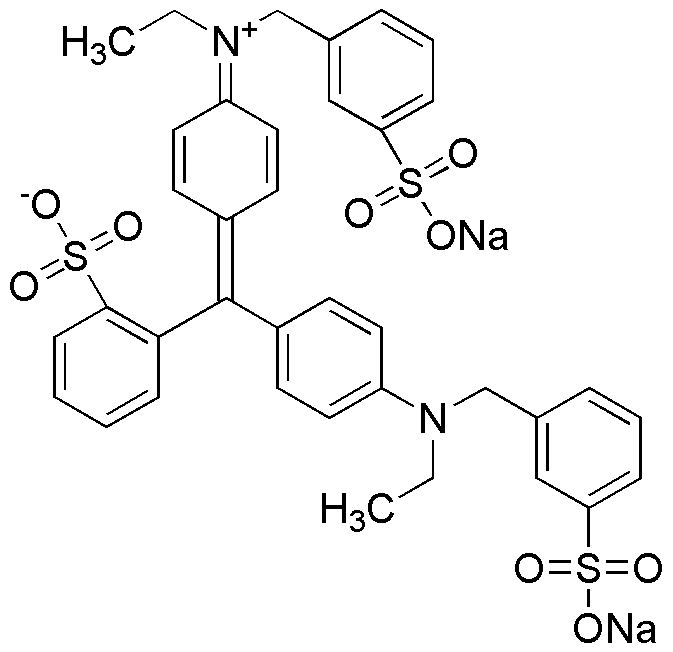Erioglaucine is widely utilized in research focused on:
- Food Industry: Commonly used as a food coloring agent, providing a vibrant blue hue to various products, enhancing visual appeal and consumer acceptance.
- Pharmaceuticals: Acts as a dye in medications, helping to identify and differentiate between various drug formulations, which is crucial for patient safety.
- Biological Research: Employed in staining techniques for microscopy, allowing researchers to visualize cellular structures and processes, aiding in the understanding of biological functions.
- Cosmetics: Utilized in personal care products, contributing to color formulation while being safe for skin application, making products more attractive to consumers.
- Textile Industry: Serves as a dye for fabrics, providing long-lasting color that resists fading, thus enhancing the durability and aesthetic quality of textile products.
Informations générales
Propriétés
Sécurité et réglementation
Applications
Erioglaucine is widely utilized in research focused on:
- Food Industry: Commonly used as a food coloring agent, providing a vibrant blue hue to various products, enhancing visual appeal and consumer acceptance.
- Pharmaceuticals: Acts as a dye in medications, helping to identify and differentiate between various drug formulations, which is crucial for patient safety.
- Biological Research: Employed in staining techniques for microscopy, allowing researchers to visualize cellular structures and processes, aiding in the understanding of biological functions.
- Cosmetics: Utilized in personal care products, contributing to color formulation while being safe for skin application, making products more attractive to consumers.
- Textile Industry: Serves as a dye for fabrics, providing long-lasting color that resists fading, thus enhancing the durability and aesthetic quality of textile products.
Documents
Fiches de données de sécurité (FDS)
La FDS fournit des informations de sécurité complètes sur la manipulation, le stockage et l’élimination du produit.
Spécifications du produit (PS)
Le PS fournit une description complète des propriétés du produit, notamment sa composition chimique, son état physique, sa pureté et les exigences de stockage. Il détaille également les plages de qualité acceptables et les applications prévues du produit.
Certificats d'analyse (COA)
Recherchez des certificats d'analyse (COA) en saisissant le numéro de lot du produit. Les numéros de lot et de lot se trouvent sur l'étiquette d'un produit, après les mots « Lot » ou « Lot de fabrication ».
Numéro de catalogue
Numéro de lot/série
Certificats d'origine (COO)
Ce certificat d'exploitation confirme le pays dans lequel le produit a été fabriqué, et détaille également les matériaux et composants utilisés et s'il est issu de sources naturelles, synthétiques ou autres sources spécifiques. Ce certificat peut être requis pour les douanes, le commerce et la conformité réglementaire.
Numéro de catalogue
Numéro de lot/série
Fiches de données de sécurité (FDS)
La FDS fournit des informations de sécurité complètes sur la manipulation, le stockage et l’élimination du produit.
DownloadSpécifications du produit (PS)
Le PS fournit une description complète des propriétés du produit, notamment sa composition chimique, son état physique, sa pureté et les exigences de stockage. Il détaille également les plages de qualité acceptables et les applications prévues du produit.
DownloadCertificats d'analyse (COA)
Recherchez des certificats d'analyse (COA) en saisissant le numéro de lot du produit. Les numéros de lot et de lot se trouvent sur l'étiquette d'un produit, après les mots « Lot » ou « Lot de fabrication ».
Numéro de catalogue
Numéro de lot/série
Certificats d'origine (COO)
Ce certificat d'exploitation confirme le pays dans lequel le produit a été fabriqué, et détaille également les matériaux et composants utilisés et s'il est issu de sources naturelles, synthétiques ou autres sources spécifiques. Ce certificat peut être requis pour les douanes, le commerce et la conformité réglementaire.


